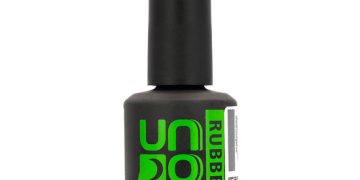A Lab diamond is a diamond produced in a laboratory and has the exact same composition and molecular structure as a natural diamond. There are a few things you should know about lab diamonds before you make a purchase. They are not synthetic and the creation process takes about six to ten weeks. Although lab diamonds should be flawless, you should remember that all diamonds have inclusions.
Lab-grown diamonds
The primary difference between natural diamonds and lab-grown diamonds is the cutting process. Diamonds grown in a laboratory are cut and polished to maximize sparkle and brilliance. Round brilliant diamonds are assessed for their cut grades based on angles, proportions, and measurements. Fancy shapes, like marquise and oval shapes, are judged on a broader range of factors. Diamonds cut in a lab typically have a sharper pavilion, less hidden weight, and a lower ratio of length to width.
However, the clarity of lab created diamonds vs real is lower than those of natural diamonds. While a high-quality lab diamond will not have inclusions, it will look like one. Lower clarity lab diamonds will have some, but not many, inclusions. Natural diamonds, on the other hand, will not contain these inclusions.
While the process for making a lab-grown diamond is not as precise as that of a mined diamond, it is still made from carbon, which is the same chemical element as in a diamond. Another key identifying characteristic of a Lab Diamond is its unique fluorescence.
Mohs hardness of 10
While you can’t find a lab-grown diamond that’s exactly like a real diamond, they do share some similarities. Like real diamonds, lab diamonds vary in color, cut, and clarity, but they’re all graded by the same independent gemmological labs. The GIA, the IGI, and GCAL, for example, all grade lab diamonds.
One major difference between real and lab diamonds is their purity. Lab-created diamonds are crystallized carbon that is grown in a lab under controlled conditions. While they’re not as dense or hard as a real diamond, they have the same Mohs hardness and are graded similarly. This means that they’re almost as durable as real diamonds.
A real diamond is the hardest known material on Earth. It is able to withstand extreme pressure and heat. Natural diamonds score a Mohs hardness of 10, while lab-grown diamonds have the same level of hardness as natural diamonds. Lab-grown diamonds are also impenetrable to scratches and sudden impacts.
Full grading reports
Lab diamonds have full grading reports. The grading report will show images of inclusions that are present in a diamond. The reports will also provide information about the cut of the diamond. This information can be beneficial when purchasing a diamond without seeing it in person. The full grading reports can help you determine which diamond is right for you.
The AGS system is the only scientific grading system in the industry, and the “Triple Zero” report is considered the ultimate pedigree for cut quality. Diamonds with AGSL reports tend to command a premium over diamonds without this certification. AGSL reports are aligned with GIA standards and are produced by GIA-trained graders. The AGS’s color grading master stones are vetted by the GIA, and its reports are based on the same strict grading standards as GIA’s.
There are several labs that issue full grading reports, both domestically and abroad. The Gemological Institute of America, or GIA, is the most authoritative gemological institute in the world. The GIA creates reports on natural diamonds, and its reports include details about color, clarity, and cut.
They are less valuable
If you’re shopping for a diamond, you probably want one that is natural and not lab grown. Although they may cost less, lab diamonds are not as valuable as natural diamonds. They can also lab diamonds vs real diamonds have small differences in the inclusions. However, a professional gemologist can tell the difference. Gemologists use special equipment to identify the difference between diamonds.
The price of a lab diamond is significantly lower than that of a real diamond. They are priced less than one-tenth the price of a real diamond. However, some people are skeptical about their authenticity. There are several factors that you should consider before buying a lab diamond.
Conclusion
One of the most common arguments against lab diamonds is ethical concerns. Many people believe that diamond mining has financed violent conflicts in Africa. Many people also believe that diamonds originated from dinosaurs. Nonetheless, the price of mined diamonds is 50% to 70% higher than the price of lab diamonds. Although the difference in price is significant, lab-grown diamonds are not for everyone.














